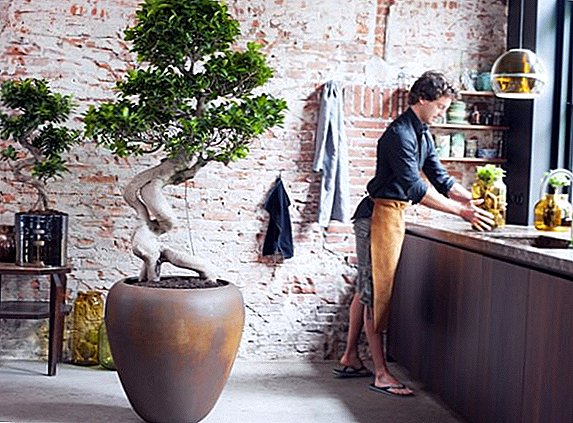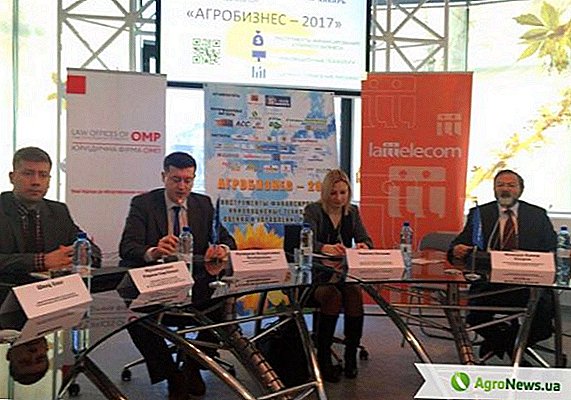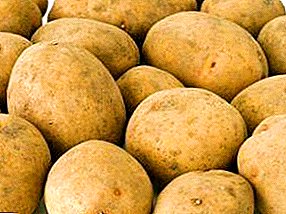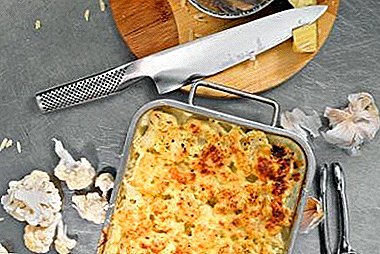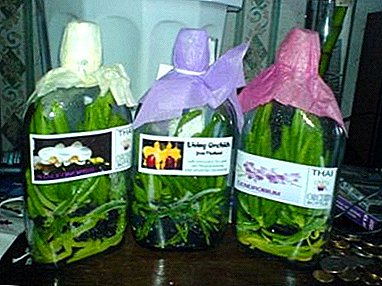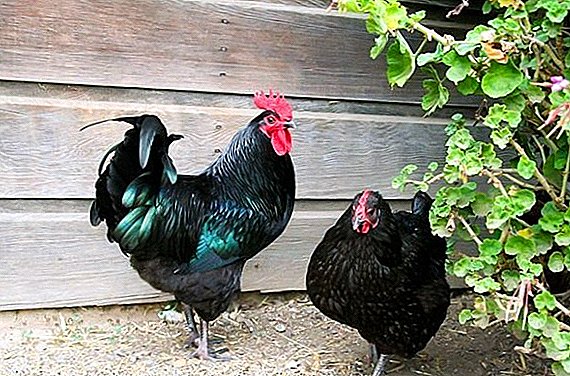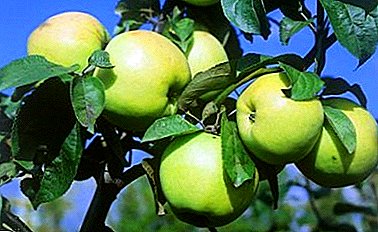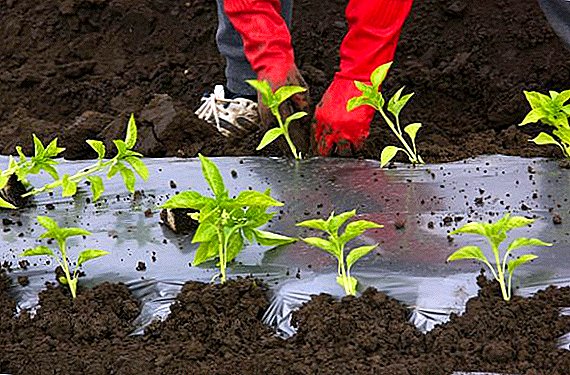Each region is characterized by its own specific climatic conditions for ripening vegetables. Not so long ago, it was almost impossible to imagine growing in the Urals a thermophilic Bulgarian pepper. But with the development of agricultural technology and breeding varieties, this has become a reality. However, to get a good harvest of pepper, it is necessary to start preparing for its planting since winter. In this article we will get acquainted with the varietal characteristics of this crop and the rules of its cultivation in the Urals.
Resistant varieties of pepper for the climate of the Urals
Choosing a variety of bell peppers for the Ural region, it is better to give preference to early and mid-season varieties with a growing season of 90-130 days.
Agricultural specialists recommend the following adapted varieties:
- "Kolobok" - it is distinguished by small bushes and peppers with an average weight of 85 g, it grows well both in greenhouse conditions and in open ground;
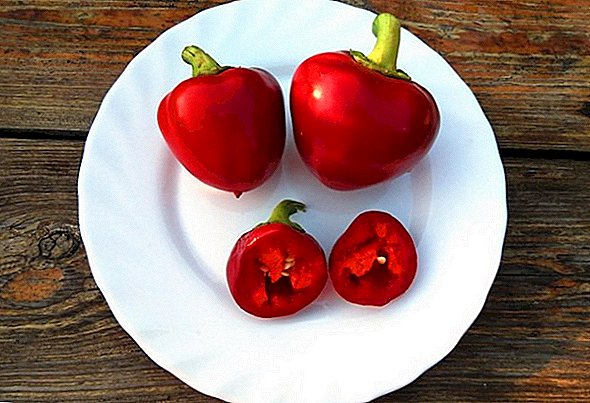
- "Topolyn" - tall bushes bear fruit with large 120-gram red peppers with a pronounced sweet taste, plants are often planted on the trellis;
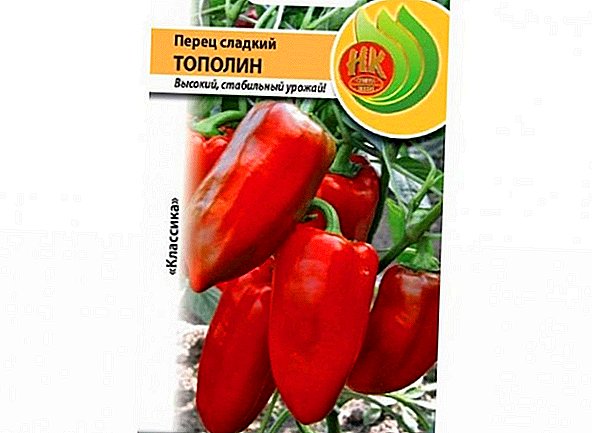
- "The Firstborn of Siberia" - mid-season variety with a plant height of up to 50 cm, fruit weight averages 50 g, color changes from yellow to red;
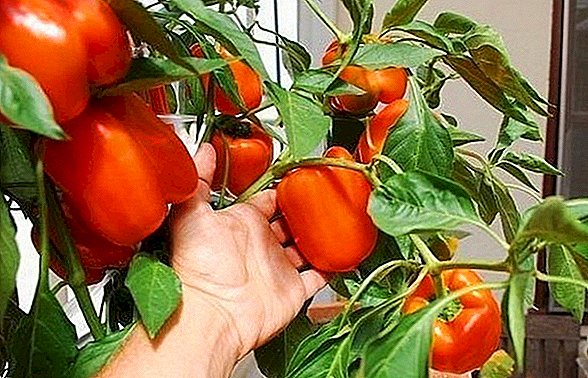
- "Siberian" - mid-season variety, bush height up to 50 cm, large fruits have a weight of 120 g, good for growing in greenhouses, even without heating;
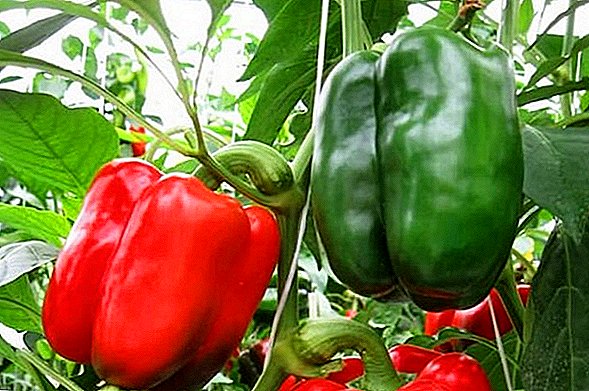
- "Montero" - an early ripe grade, height of a bush is about one meter, bright red peppers on average weigh 65 g, in the Urals it is grown up in conditions of a greenhouse;
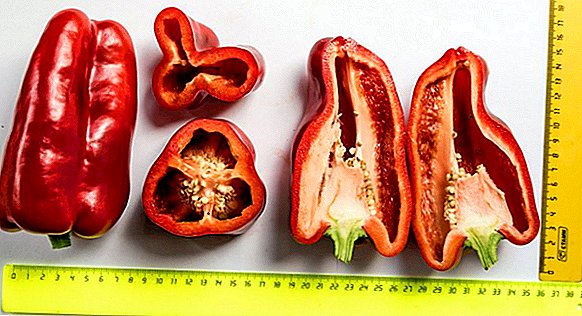
- "Pioneer" - about 120 days are required for full maturity, the average fruit weight is 60 g;
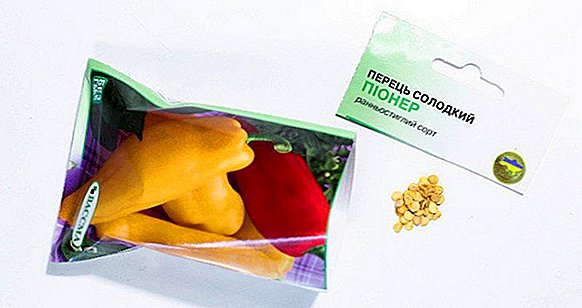
- "Winnie the Pooh" - early-ripening variety, the vegetation period is about 120 days, the fruits ripen at one time, which is convenient when harvesting;
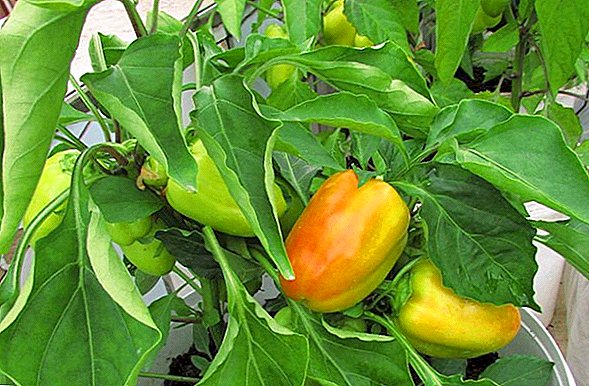
- "Bogatyr" - mid-season variety, one of the most adapted for the region, the weight of the fruit is about 150 g, it grows well in greenhouse conditions and on the ground;
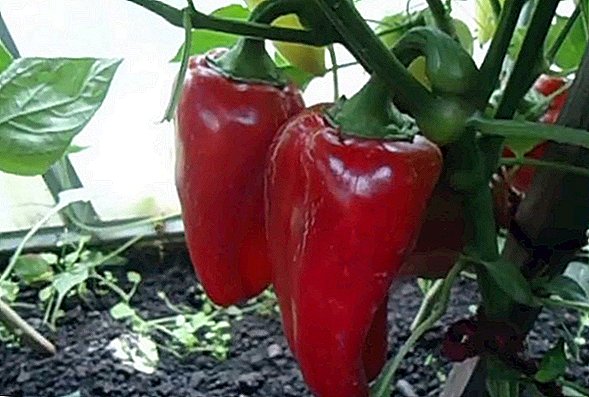
- "Bull" - mid-season variety, large yellow and red peppers on average grow to 200 g. For the Ural climate this variety is the most optimal.

Did you know? The first mentions of pepper were found in Indian treatises written over 3000 years ago. In ancient times, he acted as a tribute from the conquered peoples. So, to stop the attacks on Rome, the ancient Romans paid the Hun ruler Attila and the Visigoth leader Alaric I more tons of black pepper.
How to grow quality seedlings at home
Pepper is a very thermophilic culture and only grows from seeds in the open field in the southern regions. And in order to grow strong seedlings, which later will bring a rich harvest, it is necessary to properly conduct all agrotechnical measures - sowing seeds and caring for seedlings.
The timing of planting seeds
Given the sharply continental climate of the Urals, the seeds for seedlings are better planted in the period from about the middle to the twentieth of February. Then they will have time to germinate well and gain the necessary strength to land in the ground.
Soil mix
For sowing seeds, you should purchase a soil substrate for seedlings of peppers in a specialized gardening shop. However, the purchased soil is sometimes oversaturated with fertilizers, which leads to the "burning" of seedlings. Therefore, in order not to worry about the quality of the soil, you can prepare it yourself.
Learn how to prepare soil for seedlings, whether to grow seedlings in cassettes, how to make the backlight, how to save space when planting seedlings, how to grow seedlings with toilet paper, how to swoop down seedlings.
 To do this, mix in equal quantities of sand, turf soil, peat and humus. Or else the turf ground, river sand and peat in the same proportions and pour the resulting mixture with ten liters of water with 30 g of superphosphate, 30 g of potassium sulfate and 10 g of urea.
To do this, mix in equal quantities of sand, turf soil, peat and humus. Or else the turf ground, river sand and peat in the same proportions and pour the resulting mixture with ten liters of water with 30 g of superphosphate, 30 g of potassium sulfate and 10 g of urea.You should not decontaminate the purchased soil, but it is better to treat the prepared soil yourself with potassium permanganate solution (potassium permanganate) and additionally add any antifungal agent. Such disinfection is considered the simplest and at the same time the most effective. In one liter of hot water should be dissolved one teaspoon of potassium permanganate, pour this solution over the ground and allow it to dry.
Growing tank
For growing seedlings you can use any capacity, including peat tablets. The easiest and cheapest way is a wooden box, lined from the inside with plastic wrap and made to the size of the window sill.
However, to avoid further diving, which negatively affects the root system of plants, many experts recommend planting seeds in separate cups.
Learn in detail how to process seeds, when to sow for seedlings, how to feed seedlings, how to avoid pepper seedlings, how to plant in open ground, how to form bushes, how to water the pepper, how to prevent pepper diseases.
 Peat tablets are a fairly convenient and effective way to grow seedlings, but they are, first of all, quite expensive. And secondly, it is necessary to strictly control the humidity in them, because with insufficient watering, peat easily gets lost in a single thick lump, and if it is excessive, mold quickly occurs.
Peat tablets are a fairly convenient and effective way to grow seedlings, but they are, first of all, quite expensive. And secondly, it is necessary to strictly control the humidity in them, because with insufficient watering, peat easily gets lost in a single thick lump, and if it is excessive, mold quickly occurs.By the way, before planting, all previously used containers should be treated with a disinfecting solution so as not to carry diseases or pests from previous plantings.
Important! If sweet and bitter peppers are grown at the same time, then it is necessary to plant them in different greenhouses, and on open ground - at a maximum distance from each other. Since the hot pepper can dust the sweet, why the taste of the bell pepper is significantly reduced.
Seed preparation
Before sowing the peppers, you should carefully sort out and remove all substandard seeds. After that, you need to check the seed for germination, for this soak it in water at room temperature or in a weak salt solution. As a result, good seeds will settle to the bottom, and empty ones will float to the surface. Naturally, only seeds at the bottom are subject to planting. 
Learn more about seed stratification.To stimulate them to germinate, pour warm water for about 20 minutes and then send them to the refrigerator or cold cellar for a day. After this procedure, the seeds are treated with biological growth stimulator "Epinom" or "Zircon" according to the instructions on the preparations.
To disinfect seeds, you can use the following methods:
- pour them with a weak solution of wood ash;
- warm the seeds in hot water for about half an hour (about 55 ° C);
- for three hours soak them in onion peel (a handful of husks per liter of water).
Sowing seeds
The prepared soil is poured into the tank, on the bottom of which a drainage is pre-laid (1.5-2 cm). When using one container, the seeds are planted at a distance of 2 cm from each other with a row spacing of 5 cm. The depth of planting is about two centimeters.
When planted in separate cups, 2-3 pieces are placed in each. seeds. When using peat tablets, pour the required amount of water with water, wait for the swelling, then deepen the holes in the upper part by 1.5 cm and lay the seed there. Fill the wells with nutrient mixture, cover the tray with a lid or plastic bag. 
Learn in detail about the characteristics of pepper Ratunda, Spark, Gemini, Antey, Belozerka, Anastasia, Soloist, Golden miracle, Swallow, Kakadu, Cow's ear, Orange miracle.
Sprouting conditions
After planting the seeds are well watered with water and covered with a film or glass. To grow good seedlings, planting tanks must be in a warm and bright place. It is recommended that the daytime temperature be + 23 ... +26 ° C, and at night - not below +20 ° C.
Shoots of peppers appear approximately in 5-7 days, after germination of seedlings the film or glass is removed.
Seedling care
For the first three to five days, future seedlings do not require watering, as they were planted in moist soil. With the advent of the first leaf you need to water daily. And when the seedlings grow a little, it should be watered abundantly with a break of 4-5 days.
We must not forget about feeding plants, it is carried out in two stages: after the first 2-4 leaves and after the appearance of more than five leaves at each sprout. When you first feed 5 liters of water, add 10 g of urea and potassium sulfate and 30 g of superphosphate.
On average, one sprout consumes 100 ml of liquid feed. The second stage often coincides with picking and falls on the 2-3rd week after the first feeding. The same fertilizers are used, but in double quantity.  In order not to prepare fertilizers on their own, they can be purchased in specialized stores. Do not forget to water the peppers after each feeding and make sure that the fertilizer does not fall on their leaves. The seedlings in the peat tablets do not need any additional feeding.
In order not to prepare fertilizers on their own, they can be purchased in specialized stores. Do not forget to water the peppers after each feeding and make sure that the fertilizer does not fall on their leaves. The seedlings in the peat tablets do not need any additional feeding.
With the first 4-5 true leaves, the peppers are picked and planted in separate pots. Some gardeners believe that this stage can be neglected and dive right before planting at a permanent place of growth. When diving it is better to take out the ground with several shoots at once and carefully, so as not to damage the root system, to separate them with your hands.
Possible problems with the care of seedlings:
- lack of light leads to excessive stretching of the seedlings;
- excessive watering is one of the causes of the fungal lesions of the root system;
- lack of moisture leads to drying and twisting of the leaves.
Did you know? Sweet pepper contains vitamin C (ascorbic acid) much more than a lemon. Half of the average size of pepper fills its daily supply necessary for the human body. However, during heat treatment, vitamin C is destroyed, so it is better to use these fruits fresh.

Hardening seedlings
Approximately 10-14 days before disembarking, you should quench the seedlings. For what it is arranged on the windowsill with the window open or carried out on the glazed balcony.
It is only necessary to ensure that the seedlings do not remain in a draft, under intense sunlight and the soil temperature was not lower than 15 degrees Celsius. This technique will allow plants to get used to the surrounding air and with less stress to perceive the landing in the ground.
Planting your own seedlings on a permanent place
The age of transplanted seedlings is usually a little over two months. The best time for planting in open ground - the beginning of June, when there is no threat of frost. The greenhouse can be planted a little earlier - already in the middle of May.
The most unfortunate predecessors for sweet peppers are solanaceous crops - potatoes, tomatoes and hot peppers. Beans, beans, peas, onions, carrots, cucumbers and cabbage are considered good. It is also nice if earlier perennial grasses were growing on the plot. 
In the greenhouse
For planting seedlings in a greenhouse, light sandy soil of neutral acidity is used with a temperature not lower than +15 ° C. The air must be heated from +20 ° C and above.
The following planting scheme is used: a two-line tape with an interline width of 40 cm with a distance between plants of 20-25 cm and a spacing of 80 cm between rows. As the bushes grow, they are tied up, on the trunk until the first branching all the stepsons and later the leaves are removed.
In the first branch, the flowers are removed, two shoots remain, as they grow, one strong shoot is left at each branch, and a weak one is tipped off after the first bud. Approximately one month before the end of the season, the tops of all the shoots are pinned.
At the beginning of growth, the bushes are fed with nitrogen fertilizers, and during fruiting it is necessary to use supplements containing phosphorus and potassium.
Given the climatic features of the region and the fact that late frosts sometimes occur, additional shelters should be provided inside the greenhouse. They may be the arc covered with a dense covering material. They can be used, for example, at night, until the weather has finally settled. 
Important! Sweet Bulgarian pepper is an extremely light and heat-loving culture, do not forget about its regular watering and loosening. When harvesting ripe fruits are cut with the stem, so they are better preserved.
In open ground
Difficult climatic conditions are partially compensated by the composition of the soil, which has a neutral pH and contains many organic substances. Pepper feels good in loose loamy soils. Keep in mind that he does not like the acidic environment, so you can add chalk or dolomite flour to reduce the acidity. These are effective, and most importantly, natural and safe products.
Before planting, the ground should be prepared by digging it together with sand from the calculation - a bucket of sand per square meter of land. Bulgarian pepper fit a well-lit place without drafts. The optimal planting scheme: between the seedlings should be left about half a meter, between rows 60-70 cm. As a result, when planting tall varieties per square meter of land should be 4-5 peppers, and undersized - six bushes.  The first time after planting in open ground, peppers must be protected by covering them at night with agrotex or spunbond material. After strengthening the bushes protection can not be used.
The first time after planting in open ground, peppers must be protected by covering them at night with agrotex or spunbond material. After strengthening the bushes protection can not be used.
Adult bushes should be watered abundantly approximately once every ten days. Three to five times a season should be fed with fertilizers containing potassium and phosphorus.
Learn how to grow apples, pears, tomatoes, cucumbers, spirea, clematis, onion sets, astilba, gladioli in the Urals.In the southern regions of the Bulgarian pepper is grown everywhere and without much hassle. But even despite the harsh Ural climate, with all the rules of planting and care, you can get a good harvest of these tasty and juicy fruits and please yourself and your household with an excellent vitamin salad from pepper grown with your own hands.
Video: how to grow peppers in the northern regions
And second, if you have a greenhouse HEATED AND THERE IS A LIGHT, then it is not very early












